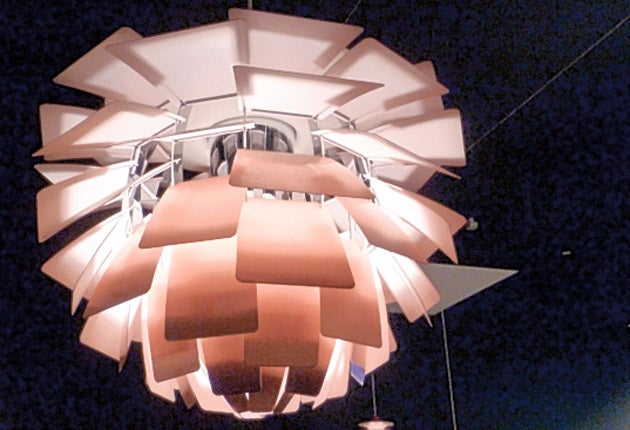The Secret History Of: The PH Artichoke

Support truly
independent journalism
Our mission is to deliver unbiased, fact-based reporting that holds power to account and exposes the truth.
Whether $5 or $50, every contribution counts.
Support us to deliver journalism without an agenda.

Louise Thomas
Editor
I t has not escaped Secret History's notice that there's a certain fascination with all things Danish at the moment – the jumpers, The Killing, the interior design (that's Lego for the small ones). So we bring you this week... the Artichoke Lamp.
Designed by Poul Henningsen more than 40 years ago, the PH Artichoke is a modern classic. Its original name in Danish was PH Kogle, which translates as conifer cone – to which it perhaps bears a closer resemblance.
Anyway, fruit or veg, the Artichoke has 12 arches with 72 overlying leaves, placed so that you can't see the bulb, which gives out a soft, steady light. It is so heavy that it is suspended from steel aircraft cables and needs a heavy-duty junction box.
When Henningsen was asked to design a lamp for the Langelinie Pavilion, a restaurant in Copenhagen, in 1958, it took him only three months as it was based on a lamp he had designed in 1927: the PH Septima, a pendant with seven glass shades. It was made by Louis Poulsen until 1940, when a wartime shortage of materials ended Henningsen's collaboration with Poulsen which began in 1925. He once said: "When you look into people's homes in the evenings, you shudder at how dismal they look. Everything in the home is unimportant compared with the positioning of the lighting. It doesn't cost money to light a room correctly, but it does require culture."
He added: "The PH is constructed with the most difficult and noble task in mind: lighting in the home. The aim is to beautify the home and those who live there, to make the evening restful and relaxing."
The Artichoke was originally available in steel, white and copper but to mark its 50th anniversary in 2008 it was issued in glass, too. It even has its own website, www.artichokelamp.org. A spokesman says: "It looks classical but fits well in today's market. It provides a soft glare-free light around 360 degrees."
It's terrifyingly expensive – but if you're looking to justify the outlay, Salley Storey, design director of John Cullen and author of Lighting by Design, says clever lighting lets you get away with cheaper furniture because the lighting enhances it, just as candlelight flatters a woman.
Not convinced? Well, you can buy a reproduction version for about £400. The real thing will set you back about ten times that. And a bit more.
Subscribe to Independent Premium to bookmark this article
Want to bookmark your favourite articles and stories to read or reference later? Start your Independent Premium subscription today.
Join our commenting forum
Join thought-provoking conversations, follow other Independent readers and see their replies
Comments